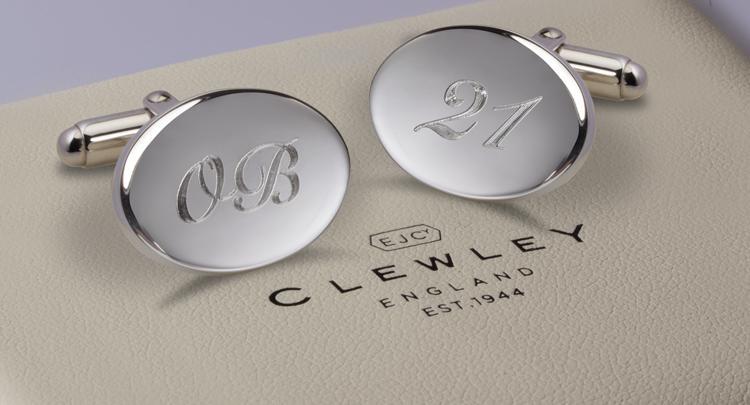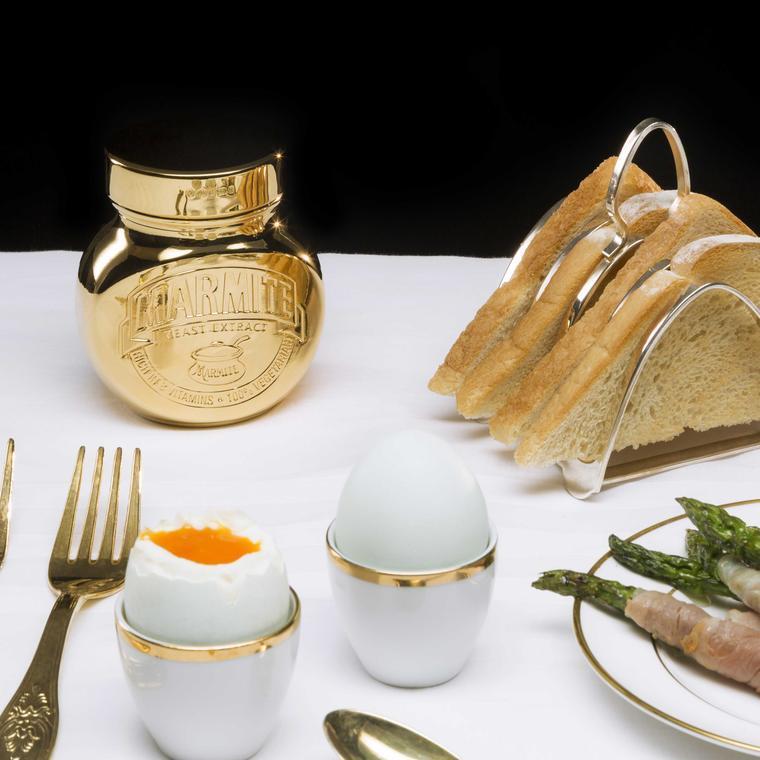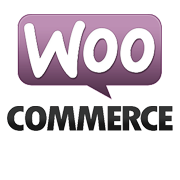Starting A Personalized Gift Retailer Online and Growing to $30k/month
Hello! Who are you and what are you working on?
I’m Elliot Bishton, the founder of Engravers Guild of London, an online personalised gift retailer. We describe ourselves as curators and finishers of beautiful gifts, such as engraved hip flasks, silver cufflinks, jewellery and fragrances.
We started just over a year ago with a collection of only seven pairs of cufflinks, and now have more than 200 lines with a view to expand further. From turning over about $3,000 per month 18 months ago, we’ve now been clearing the $30,000 per month mark.

What's your backstory and how did you come up with the idea?
I come from a long line of manufacturers in Birmingham, England. The city used to be the biggest centre of jewellery production in the world, and my family has been running businesses there since at least the 1850s.
However, with the decline of manufacturing in this country and the onset of the financial crisis in 2009, my father decided to close the factory almost 10 years’ ago. I remember driving away from it and thinking about all the machinery sitting there, feeling that it must be possible to re-use it for something.
That night, I emailed the agency and told them never to contact me again, I designed a complete rudimentary website (on PowerPoint!) and found a new website coder online.
Unfortunately, I was neither an engineer nor an apprentice… so I had absolutely no idea what any of the equipment could do. The only machines that I could comprehend were a couple of small engraving devices that had been forgotten about in a storeroom.
So on that journey home, the thought process was quite simple – create a business that sells engraved items.
And that was that. Quite literally, because that’s as far as the idea went.
At the time I was just finishing university, I had a place on a graduate scheme in London that year, and was working in a temporary role in the British Parliament till then. While the thought of starting my own business was alluring, I felt I had to make the most of opportunities elsewhere.
Still, the draw to start my own business never went away. I came up with many other ideas in the intervening time, but continued to believe that there was an opportunity in personalised gifts.
As I saw it, the market had split between low cost providers that would personalise your products very cheaply (of questionable quality) and designer offers which would personalise your products very expensively (and still of questionable quality). So I aimed to fill a gap which delivered more premium products, but well below the designer prices.
On the day of my 30th birthday, I quit my job and started Engravers Guild full-time.
Describe the process of designing, prototyping, and manufacturing the product.
Engravers Guild sells all types of items, but the real product is the personalisation. As I saw it, this consisted of two things: the actual engraving (of course), and the way the website communicated the personalised gift experience.
So, the engraving first…
When launching the business, I had a full-time job and couldn’t manage the production process myself. As such, I found a company (just through googling) that could do it for me, but it came at an incredible cost. There just are not the margins (or, at least, I can’t find them) in this industry for so many people to take a share of the sale (i.e. the product supplier, the engraver, and me) and unsurprisingly I was making substantial losses.

So when I gave up my job, it was time to bring the engraving and despatch function in-house. Engraving equipment is pretty expensive, but fortunately we were able to start with the two old machines from my father’s factory. They ran off Windows 95, were prone to crashing 100 times a day, but were an inexpensive way for us to enter the market. Since then, we’ve spent about $20,000 on new machinery, but I don’t know if we’d have been able to do that had it not been for those two original machines.
However, the engraving is only half the story, as the packaging part requires just as much work. I look at many retail operations with envy as they just have to pick a box off the shelf and pop it in the post. By contrast, every single sale we make has to be individually personalised, and then packed in all sorts of weird and wonderful ways. Not only is it immensely labour intensive, but the opportunity for mistakes is rife. I’d like to say that there is some magic approach to doing it, but really it all comes down to being diligent.
As for the website...
In the early stages, I had zero knowledge about web builds so decided to pay someone to do it. When talking about costs for this, I hear massively ranging figures about what is a reasonable expense. Anyway, I had given myself a total budget of about $10,000 to cover brand identity, web design, web build and ecommerce function.
I don’t regret the price, but I do regret the agency that I chose.
In short, they delivered nothing. Absolutely nothing.
After a down-payment and further payment upon agreement of the design (which took months), all I got was empty promises.
What was months soon became a year and any business dreams I had were totally crippled.
It got to the point where I was $7,000 out of pocket, 18 months older, nothing to show and going nowhere… so I decided I had to start again if I wanted to move forward.
That night, I emailed the agency and told them never to contact me again, I designed a complete rudimentary website (on PowerPoint!) and found a new website coder online. We met two days later in my lunch-break and the website was finished eight weeks after that. It was the best decision I ever took.
Describe the process of launching the online store.
I was still working full-time in my job (funding the business with my salary) when the website launch came, and so all energy was just focused on creating content and getting everything working.
However, despite not activating a promotion strategy, I have to say that I did expect more to happen.
With so many billions of people sloshing around the internet, I didn’t think it unreasonable to assume that someone somewhere would stumble across my website and convert to a sale.
But no.
My limited knowledge of Google Analytics told me that there were hundreds of visits to my site… but still nothing. I thought that either something with the website wasn’t working or that my entire business was just fundamentally flawed.
It later transpired that almost 100% of my registered traffic was just spam bots, and I realised that acquiring real traffic would be harder than I thought.
The turning point came when we embarked on Google Adwords. Despite fumbling around in the dark on the platform, we managed to elicit a few sales – albeit at a considerable loss. We sold much of our limited stock in a few days, and the experience gave me the confidence to quit my job a few weeks later.
Since launch, what has worked to attract and retain customers?
After some initial success on Google Adwords, I decided to dedicate more resource to that channel. I also thought it would be a good idea to pay someone who actually knew what they were doing and I could focus my energy elsewhere.
The overwhelming learning that I took from trying to find someone is that a) it’s expensive, and b) the industry is full of charlatans. After a couple of negative experiences with Adwords managers, I decided to go alone and learn it myself on Udemy. I’d advocate the self-taught route for anyone bootstrapping a business now; however, at that moment, I was told about a new agency (TRGT Digital) that an old-acquaintance had started and so we joined up and I’ve never looked back since.
That said, Adwords is no walk in the park. Every market is different but - on the whole - I don’t think I’m exaggerating too much to say that it is often a good result just to make your money back. In many ways Adwords is a perfect market whereby companies will pay for a keyword all the way to the point at which it is not worth them paying any more (namely, the point at which they make no money). So, for you to find value in certain keywords where more established competitors cannot is a difficult task.
Added to that, many companies are even prepared to lose money on Adwords, justifying it on grounds of estimated lifetime value of those customers they attract (as opposed to just the direct sale).
In terms of SEO, 14 months ago we hadn’t had a single organic impression on Google. This has been growing steadily to over 1,000 organic impressions sometimes in a single day.
As an alternative, we’ve also dabbled in paid Facebook campaigns. In selling gifts, though, it’s difficult to identify the correct audience as gifting is all about the recipient’s interests, not your own. Moreover, we estimate that the period of consideration for someone buying a gift is about a day and a half – so unless you engage with them within that window, then you are throwing money away.
Nevertheless, we would like to explore more with Instagram. My gut is that it will not be a lucrative channel for us (as it’s difficult to build a community around gifting), but it feels like a hygiene factor in online business and so is something we want to build.
PR is a further aspect to look at. I used to work in corporate PR, and so media engagement should be an obvious route, but we’ve actually done little to date. The main piece of activity was a combined project with Marmite, which is an iconic British brand and owned by Unilever. They commissioned us to create the most expensive jar of Marmite ever made and the widespread national coverage helped push our name, though it translated to few sales.
Check out the video here.

/ Jar of Marmite plated in 18 karat gold
Looking ahead, though, the glaring reality is that this is a business which depends on SEO. Almost no resource so far has been allocated in building our online footprint, so this has to be our priority if the business is to build profitability.
How are you doing today and what does the future look like?
Our trajectory over the last year has been pleasing. We literally do absolutely everything we can to give great customer satisfaction, and we seem to be building a reputation for delivering a superior kind of personalised gift experience.
We wouldn’t expect this to instantly feed-through to the bottom-line of the business though. Ultimately, personalised gifts is a volume industry with high gross profits but low net margins. Our leading competitor ranks number one in Google for hundreds of keywords, enjoys enormous economies of scale (revenues of over $20m) and has a net margin of about 15% (they are part of a publicly listed company, so have to make this information available). By contrast, all of our costs are significantly higher at this stage; but, encouragingly, our net margin has actually been comparable of late.
In terms of absolute profit, it was very difficult at first when making only limited sales; but when you start to make hundreds (or even thousands) of sales a month, a few tweaks here and there on your costs can translate to a big difference on your balance sheet. Ordering greater volumes, re-negotiating with suppliers, driving efficiency gains in marketing activity and paying less in postal costs can be the difference between being in the black or the red. Our web team, Class Creative, is also doing a great job at streamlining our operations to reduce the resources required there.
We want to explore email marketing now. We’ve amassed about 2,500 subscribers in the last year but still haven’t had chance to send a single email. We’ve heard great stories about what can be achieved in this channel, so look forward to testing the theories at key gifting times of the year.
In terms of SEO, 14 months ago we hadn’t had a single organic impression on Google. This has been growing steadily to over 1,000 organic impressions sometimes in a single day. Although that converts to only about 35 organic clicks a day, those numbers start to look a lot bigger over several weeks and is a notable saving when compared to Adwords performance.
Through starting the business, have you learned anything particularly helpful or advantageous?
The first thing would be “Keep it simple”.
From the products you deliver, to the way you communicate and to the business mission you have… keep it simple. It may sound easy on the face of it but, as Steve Jobs famously said, “It takes a lot of hard work to make something simple”. I see many great businesses with fantastic products and skilled teams but the whole operation gets wrapped up in complexity. So, from the top of your business to bottom, try to keep it simple.
The second would be to have a “Bias for action”. This is one of Amazon’s 14 Principle’s of Leadership, and I think is just as relevant for a start-up as a global behemoth. Most decisions are often reversible, so try not to prevaricate and just keep moving.
Finally, treat every day as Groundhog’s day. I don’t think any business can feel secure in an online market – good ideas don’t last for long and it only takes a modification from one of Google, Facebook, Amazon and Co. to completely undo your route to market. You can never afford to rest on your laurels.
What platform/tools do you use for your business?
Our site is built on Wordpress with WooCommerce.
Our payments partner is Stripe, and we also offer Paypal (reluctantly, because the fees are so high).
We employ the services of Feefo for reviews, and use all the usual Google Analytics and Google Adwords apps.
To add to those, we use SEMRush whenever we can - it’s an exceptional tool for gathering information about organic rankings in Google, though is fairly pricey.
Finally, we’ve recently automated the printing of our orders, gift cards and address labels with Printnode. When considering selling in other marketplaces, we’re also looking at ZenStores for multiple marketplace management.
What have been the most influential books, podcasts, or other resources?
I would recommend Psycho-Cybernetics by Maxwell Maltz. It teaches you how to focus on the end-goal.
However, there is no substitute for learning by doing.
Advice for other entrepreneurs who want to get started or are just starting out?
Pursue your ideas with conviction.
If you have conviction, then the rest will follow (at least, with some good fortune). It may sound easy, but the hardest part is not to fool yourself that you have more conviction than you do.
Startups often succeed on the drive, hunger and attitude of the founding entrepreneur. If you don't have a deep conviction about what you're doing then try to change things so that you do.
Are you looking to hire for certain positions right now?
Being a personalised gifts business means it’s very labour intensive (everything has to be individually finished and packed).
The priority is to remove me more from the day-to-day operations so I can focus on the growth, and so we’re always on the look-out for production personnel.
Where can we go to learn more?
We have all the usual social media channels, but at the moment all focus is on the website where we have our full selection of personalised gifts.

Download the report and join our email newsletter packed with business ideas and money-making opportunities, backed by real-life case studies.

Download the report and join our email newsletter packed with business ideas and money-making opportunities, backed by real-life case studies.

Download the report and join our email newsletter packed with business ideas and money-making opportunities, backed by real-life case studies.

Download the report and join our email newsletter packed with business ideas and money-making opportunities, backed by real-life case studies.

Download the report and join our email newsletter packed with business ideas and money-making opportunities, backed by real-life case studies.

Download the report and join our email newsletter packed with business ideas and money-making opportunities, backed by real-life case studies.

Download the report and join our email newsletter packed with business ideas and money-making opportunities, backed by real-life case studies.

Download the report and join our email newsletter packed with business ideas and money-making opportunities, backed by real-life case studies.














